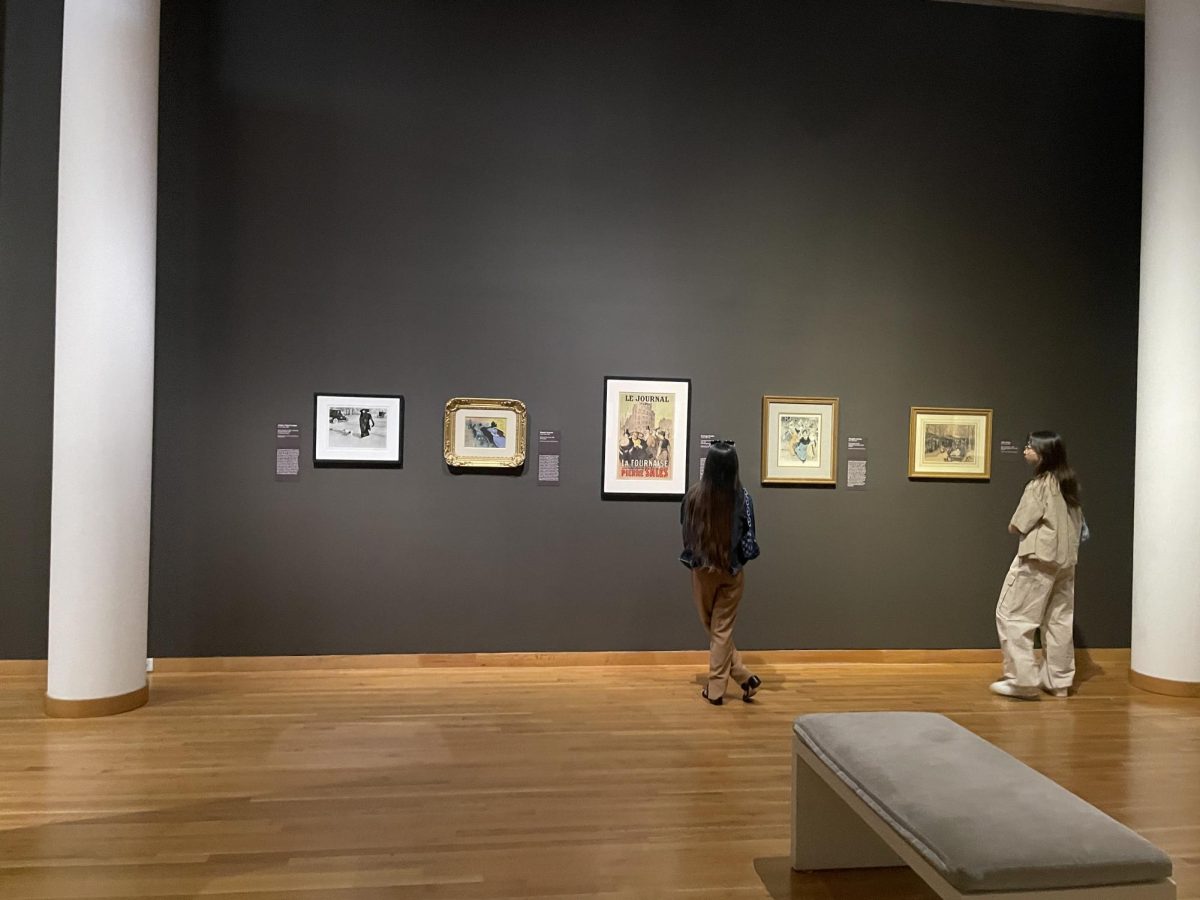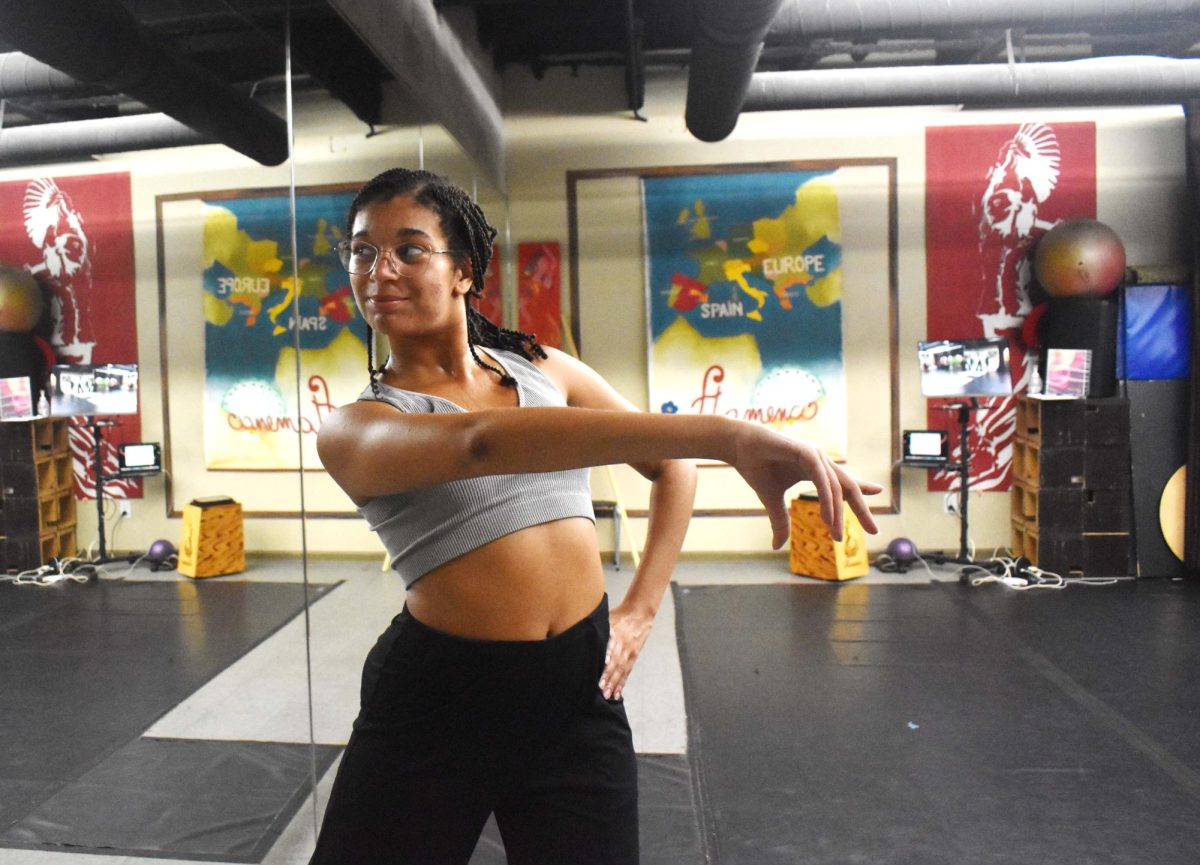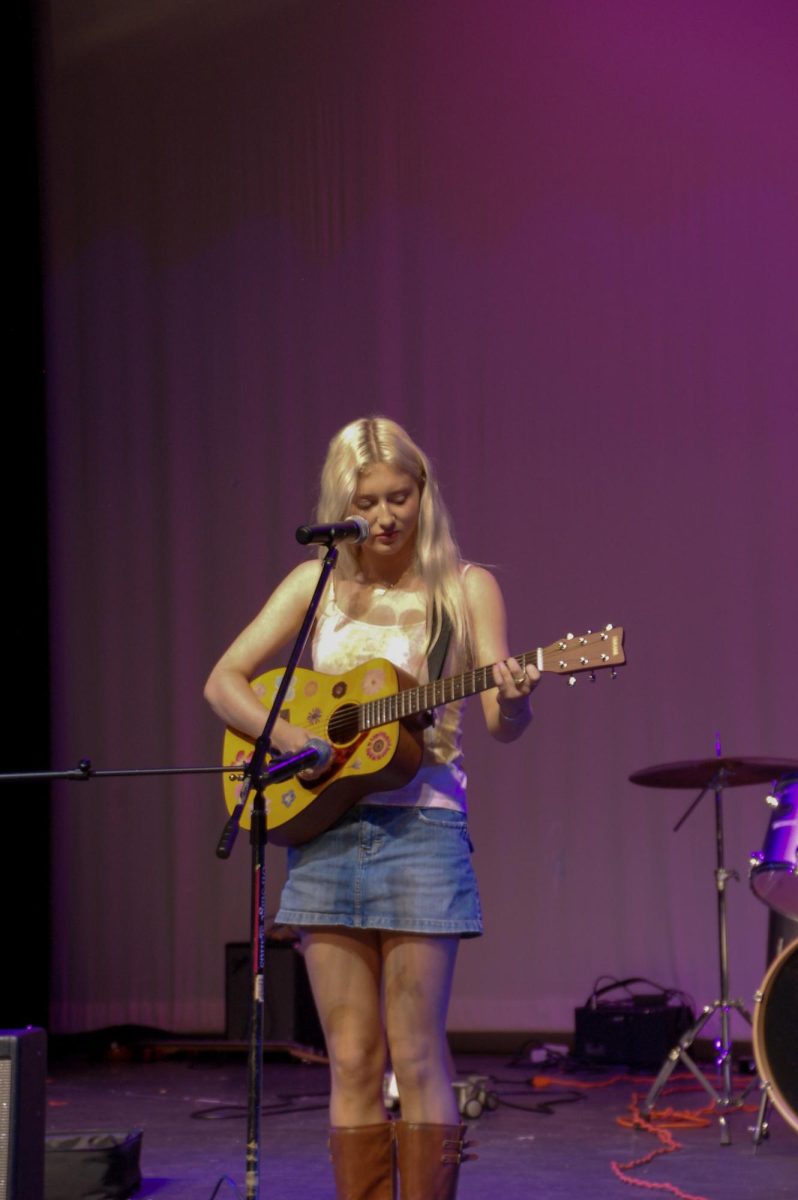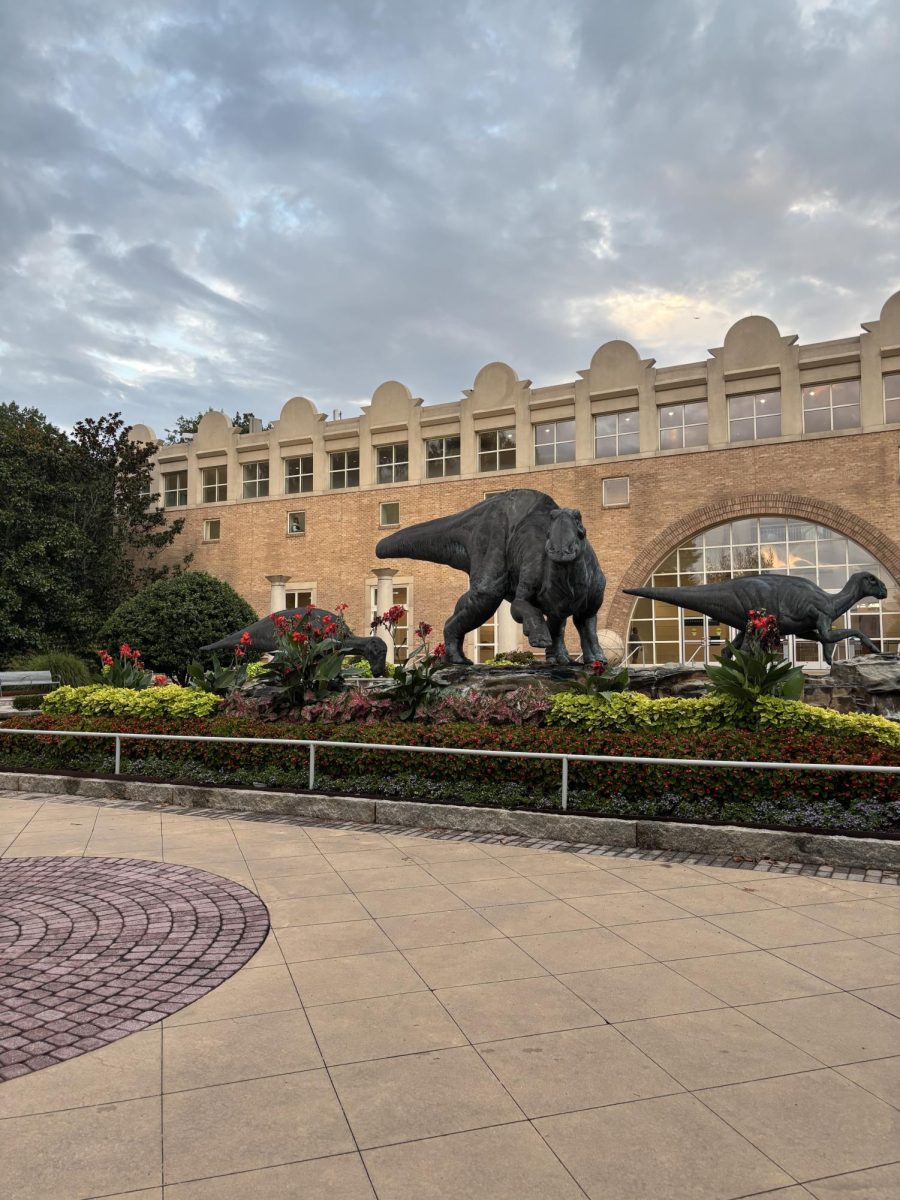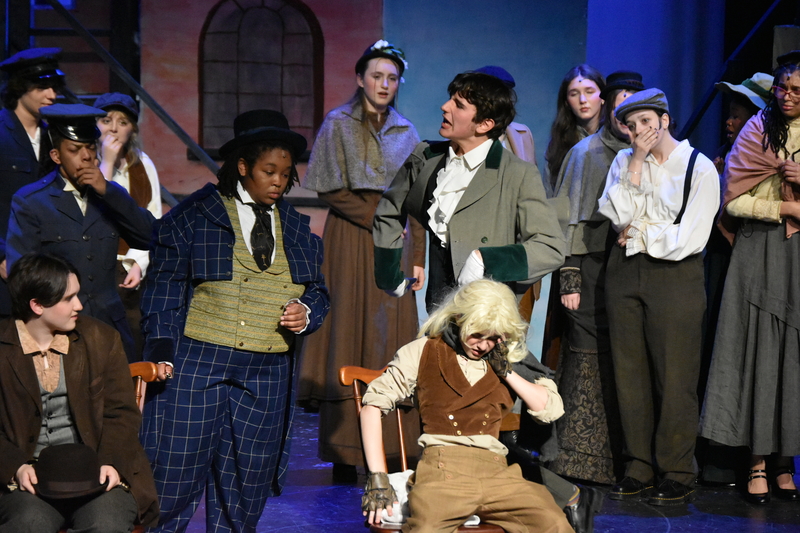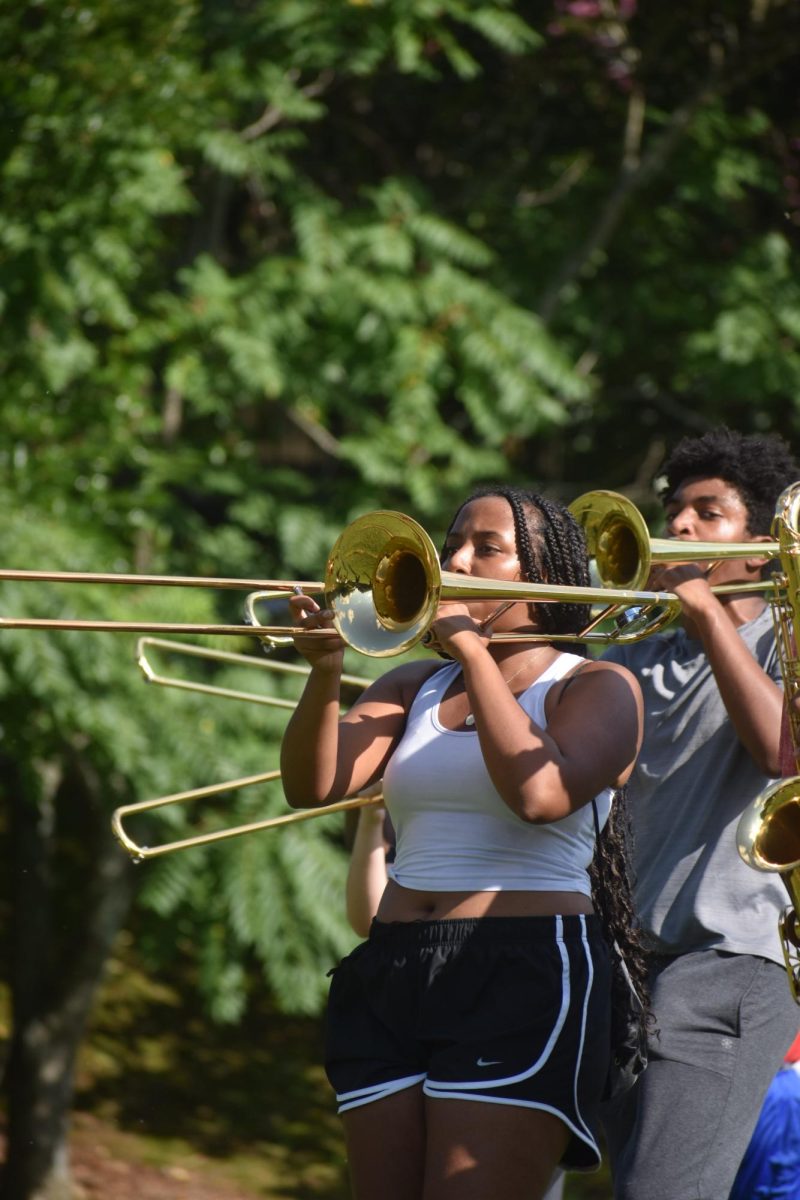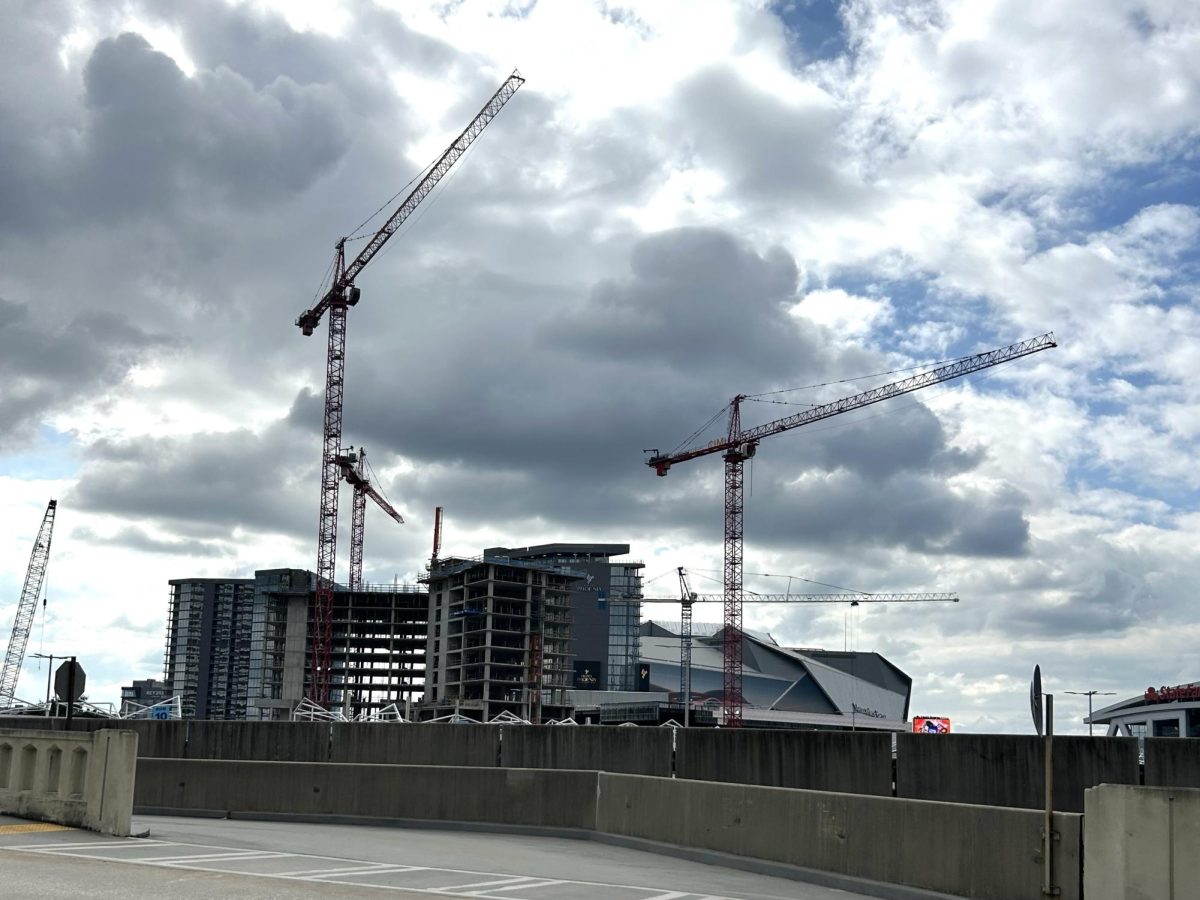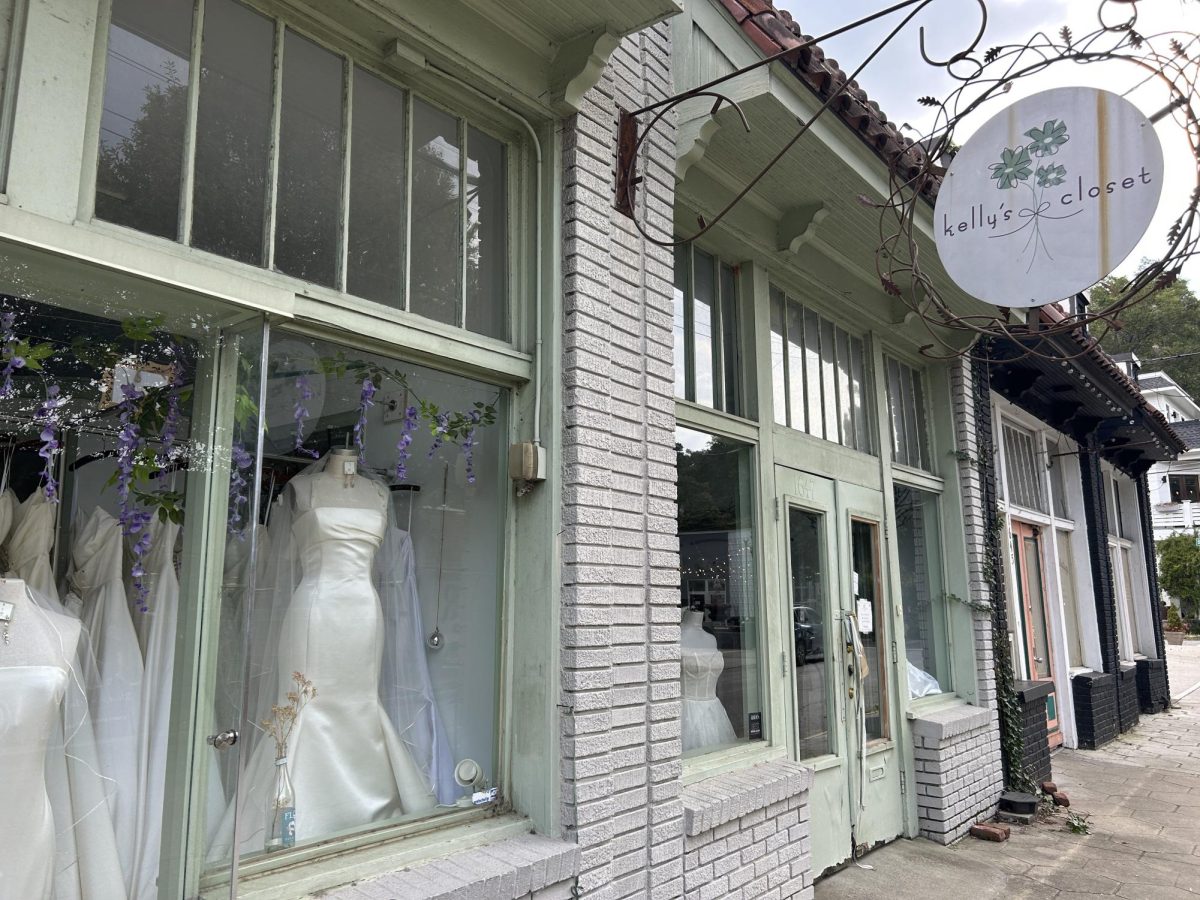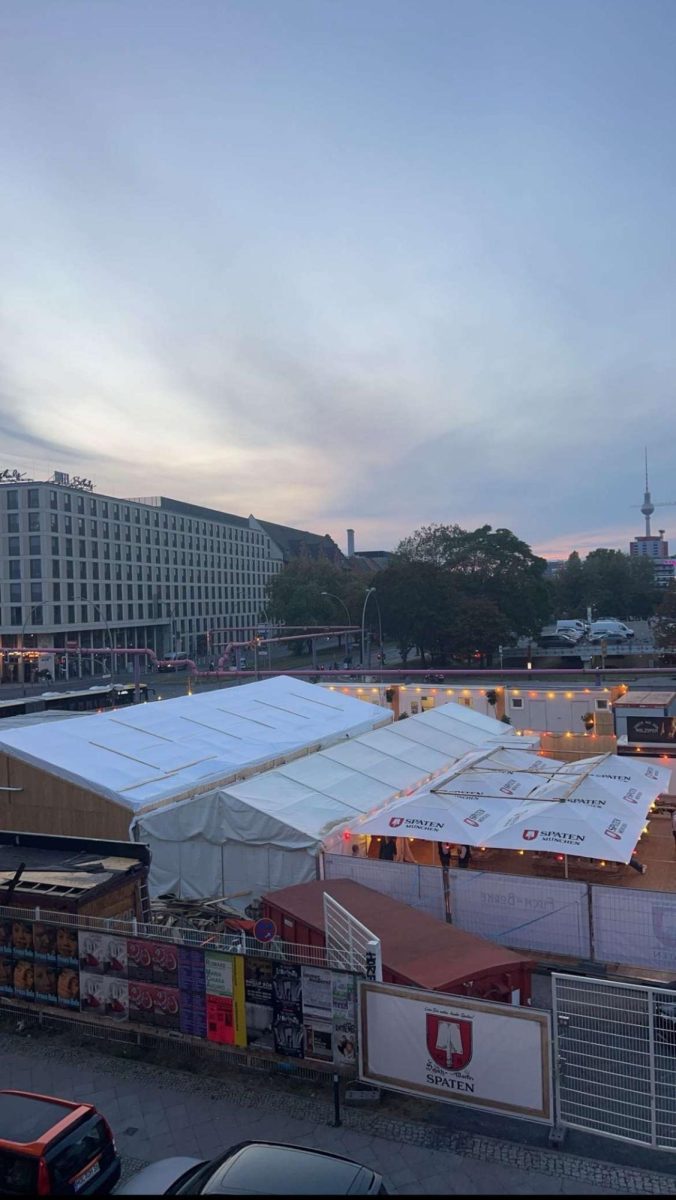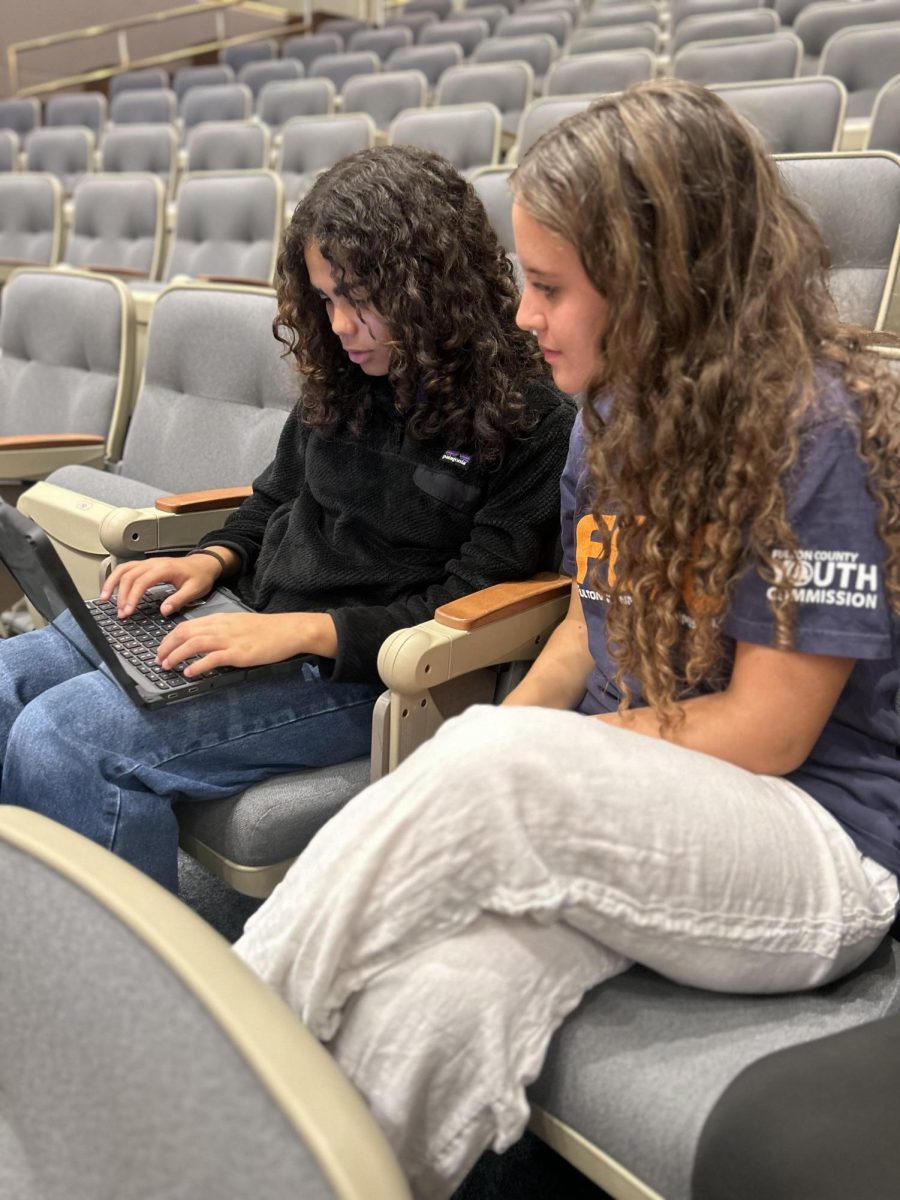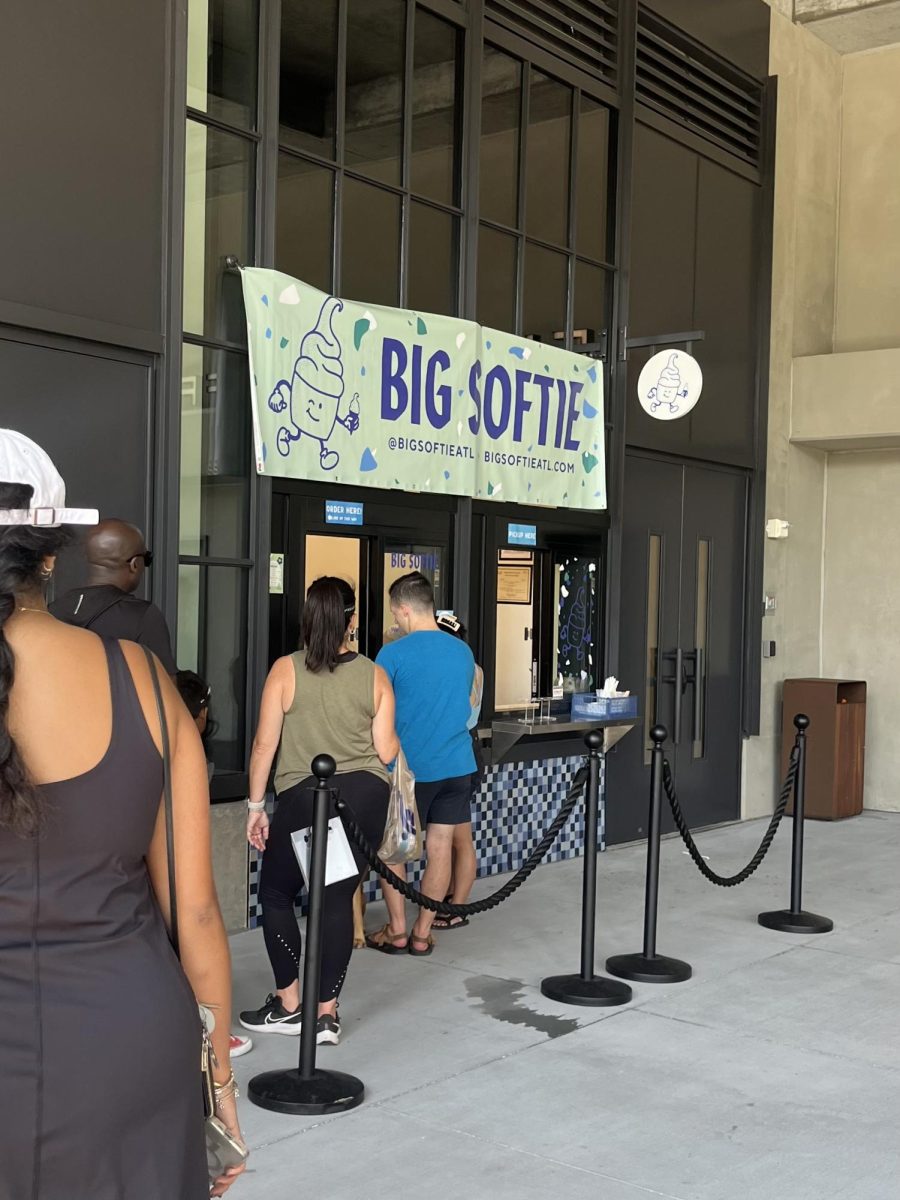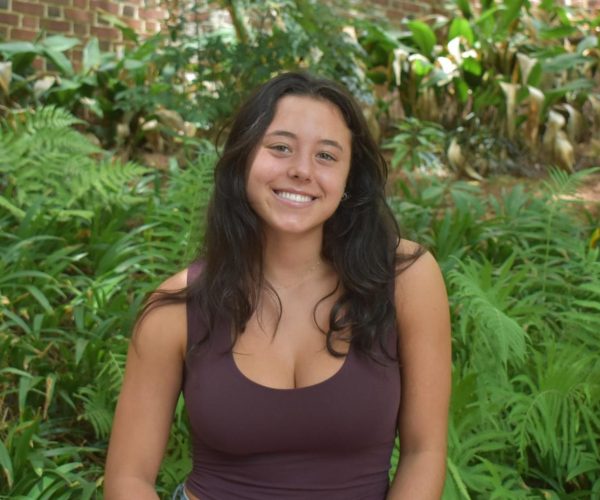Five statues and approximately 60 drawings, prints, photographs and paintings of the late 19th to early 20th Century Paris fill the second level of the High Museum at the Woodruff Arts Center. The new exhibition “In the City of Lights: Paris, 1850-1920” encapsulates the architecture, people and culture dynamic of France’s capital.
In the exhibit, French artists, such as Théophile Steinlen, Henri-Gabriel Ibels and Edgar Degas showcase Parisian art in various forms that feature the luxuries and hardships of city life, the bustling street markets and cafés and the blue-collar working class. Caroline Giddis, a curatorial research associate at the High, said that given the history of exhibits at the High, this show will feel more for viewers.
“We’ve had some really big shows lately, like ‘Samurai’ and ‘Nubia,’ that feature some of the more ancient traditions of artwork,” Giddis said. “This is a little more recent; people might be familiar with 19th-century Paris. I hope that draws the viewers in and then they may be surprised to see artwork that isn’t often shown and how lovely the pieces are. That adds excitement to it.”
Making use of both the High’s collection and private collectors’ art pieces, Giddis said that with her collaborators, both private collectors and those at the museum, she noticed a common Persian theme. Some of the focal points of the pieces are the entertainment industry, showing cafés, cabarets, ballets and concerts, as well as depictions of social classes. Beginning last May, the idea grew into a project that formed the exhibit this September.
“Whether it was the Parisian who’s promenading down the street looking very glamorous, or the working class and the markets, we noticed the content of the work was really centered around the different aspects of Paris,” Giddis said. “We thought that it would be an exciting opportunity to highlight the work, but also celebrate Paris.”
Before the exhibit opened, Giddis said she expected a positive response from both tourists and Atlantans visiting the show.
“The show comes with a lot of surprises,” Giddis said. “It shows such a different side of Paris with the identities of dancers and the performers and the different, strong women that were around in the entertainment world in Paris; it’s definitely a great show.”
Bill and Dee Cox, who visited the museum from southern California, said they enjoyed how the exhibit is unique compared to others at the High.
“I have a strong initial reaction to the exhibit because I’ve never been to Paris,” Bill Cox said. “I’ve just liked seeing the different styles of that type of the old time period but also that style of art.”
The timing of the opening was both intentional, with the 2024 Summer Olympics being held in Paris and European travel trends on the rise, and unintentional, Giddis said.
“It just kind of happened that we were already working on this show, but then we realized that a big draw for people who traveled this summer would be able to come back in the fall and reflect on their time [in Paris],” Giddis said. “People may be nostalgic for their travels, and this more impressionist show encourages them to look at a different side of Paris than what they’ve seen before.”
Claudia Einecke, European art and exhibit curator, who has lived in Paris, said the exhibition brings a different understanding of the city.
“For me, the special appeal of this exhibition lies in the great kaleidoscopic variety of places, activities and people it offers to the viewer,” Einecke said. “Each urban view, each lively scene provides a historical, social or psychological insight into the great city of Paris–the City of Lights–as it was 100 plus years ago and as it, on some levels, still is.”
Einecke said the research process taught her more about places in Paris, despite previous visits.
“Now I know more about the history, and I see Paris in a different light,” Einecke said. “My understanding is even richer than before, and I would imagine other people will have the same experience.”
While grouping artworks from the High’s inventory and private collections, Giddis said that a goal of the exhibit was to feature work that isn’t seen normally.
“Each exhibit differs so much by what the curator is trying to achieve,” Giddis said. “As far as this show goes, we essentially wanted to draw from our collection and then to local private collections. And because we have patrons that have a really vast collection of fringe drawings, so we wanted to feature that private collection and found that you know, there’s a lot of work that sits in storage that isn’t often seen works on paper.”
Giddis also said that some artworks are more precarious than others and require extra care.
“[The artwork] can’t be exposed to light for long periods of time, just because of the way that that light and exposure ages them or face them,” Giddis said. “So we wanted to feature some works that are normally in storage and and highlight that private collection. So we landed on, you know, focusing on Paris in the 19th century, and how the Paris we know and love today was really created during that period from 1850 to 1920.”
The artwork that the High uses for the exhibit is a loan. Once the exhibit is over, the museum sends the work back to the private collectors.
“We get to show this art for a period of time,” Giddis said. “We’re lucky to see all of the different works of art from different perspectives and from different mediums.”
Dee Cox has been to Paris and also paints regularly. With her experience, she said she enjoys the exhibit, specifically, the projection of Paris during a time period she won’t see in real life.
“I like the video because I like seeing how the Eiffel Tower looked back in the 1900s,” Dee Cox said. “Some of the structures I see in this picture, I’ve seen before, and some I haven’t seen at all.”
Through the exhibit design, Giddis said she found the time period to be more unique than what she knew before.
“When Claudia and I initially looked at the show, we thought it would be a nice little feature on Paris,” Giddis said. “What we found just looking more closely at the work is that there are some really beautiful and moving portrayals of the city and the people.”
Einecke said the exhibit is designed to accompany what people may see when visiting Paris, not replacing the actual experience of going there.
“The way this exhibit is played out is like a guidebook,” Einecke said. “The Eiffel Tower isn’t in the art exhibit itself, only in a video, even though that’s the architectural image when you think of Paris. It’s about the places, people and scenes.”

